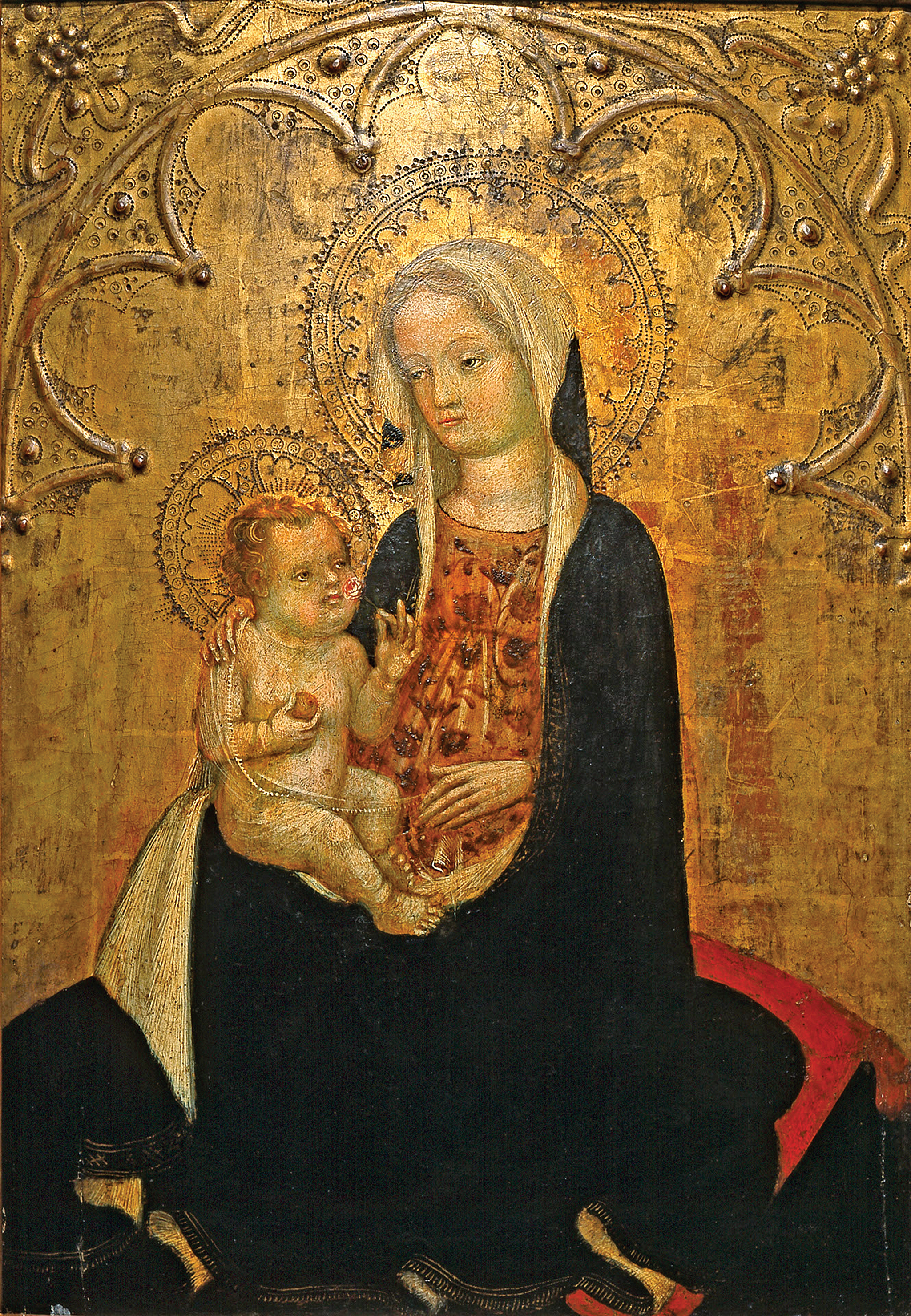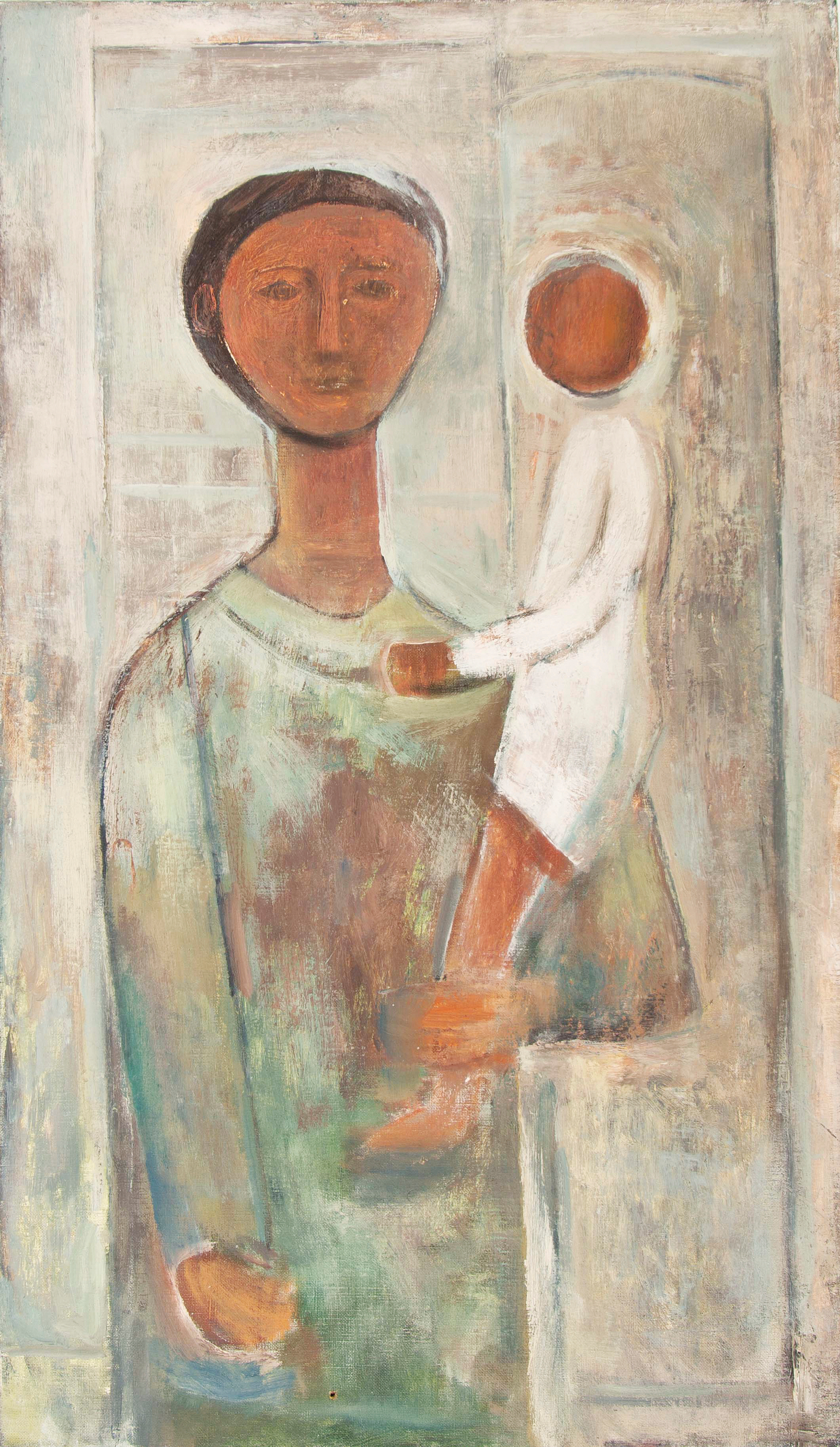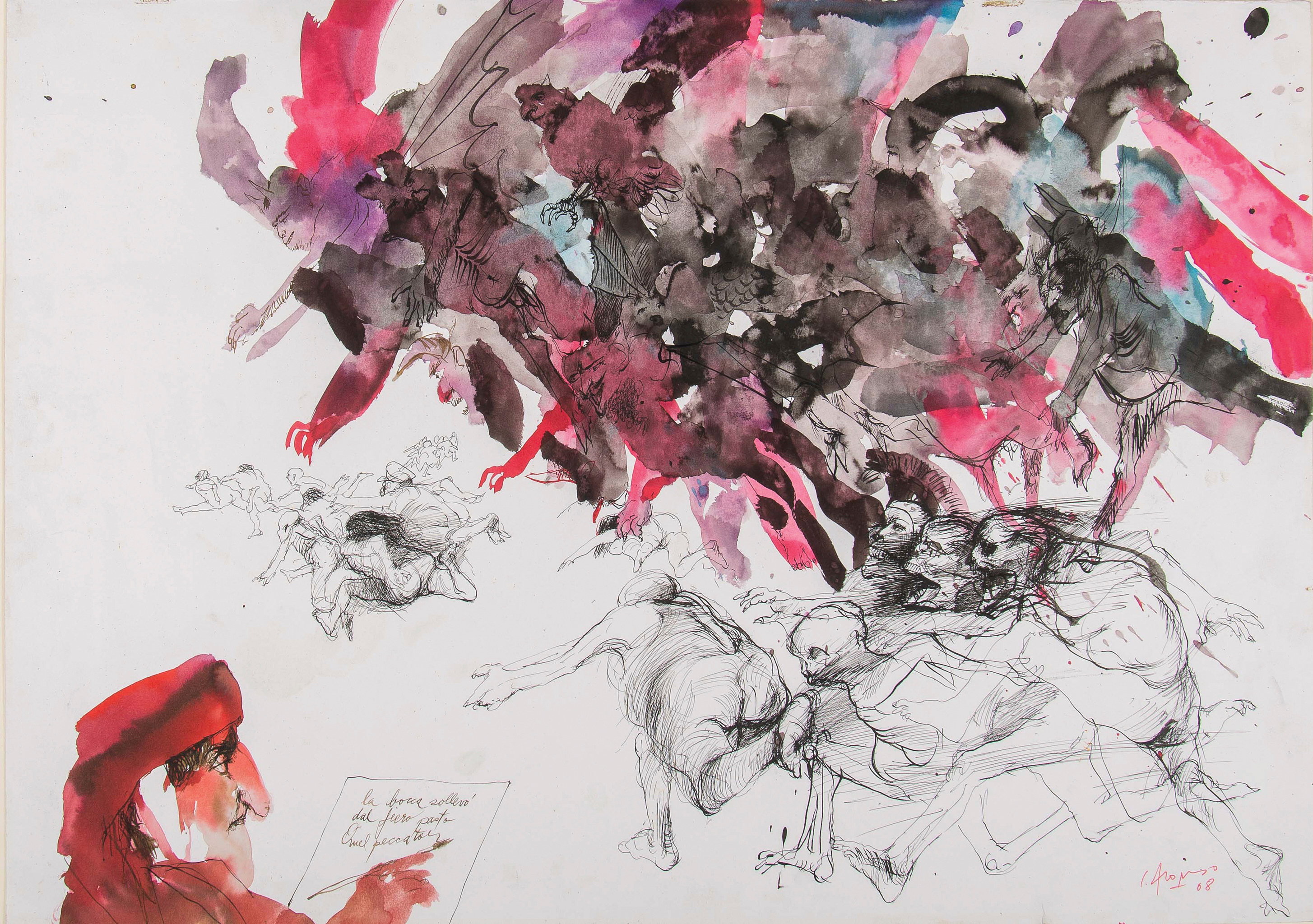This Blanton Museum Exhibit Examines the Long Afterlife of the Medieval Aesthetic


From left, Michelino da Besozzo, "Madonna and Child” (circa 1428–29); Ellsworth Kelly, “Mother and Child” (1949).
The Middle Ages ended more than 500 years ago. And yet the era’s iconography—a towering Gothic spire, crucifixion scenes trapped in one dimension, richly illuminated manuscripts, haloed saints—is instantly recognizable today. From Game of Thrones to early Disney films, modern artists are continuously drawn to medieval artistic movements to make sense of modernity.
In its exhibit, the Blanton Museum of Art examines the long reach of the era’s imagery in a quest to understand why the ideals and aesthetics of the Middle Ages continue to resonate. On display through July 9, 2023, “Medieval x Modern” presents modern works of the 19th and 20th centuries alongside their counterpart medieval inspiration. An early 15th-century gold-leaf wood panel Madonna and Child hangs near a 1949 oil painting of the same subject by Ellsworth Kelly. Similarly, a late 14th-century portrayal of Saint Catherine of Alexandria can be viewed in conjunction with two modern renderings of the medieval saint. But not all pieces have a precise counterpart of yore. An 1883 etching by Félix Buhot conjures centuries past with smoky renderings of a witch flying through the sky, a ship emerging from fog, and an all-knowing owl in the center.
Christine Zepeda, MSIS ’09, MA ’18, a former Andrew W. Mellon fellow in prints, drawings, and European art, drew on her expertise in medieval art and architecture to curate the exhibit in collaboration with Holly Borham, the Blanton’s associate curator of prints, drawings, and European art. Together, they chose the concept as a creative way to showcase Zepeda’s specialty for her fellowship within the confines of the Blanton’s limited collection of medieval art.
Composed almost entirely of pieces from the museum’s existing collection, the exhibit features a wide variety of mediums and pushes back against the idea that the so-called Dark Ages were void of innovation or cultural significance—an enduring belief propagated during the Renaissance.
The three-room exhibit takes visitors on a journey through the revival of interest in medieval art beginning in the Victorian period, when artists relied on medieval imagery to build national pride, navigate turbulent years, and reflect on the value of labor and craftsmanship. “The whole show is about reviving the past for different purposes,” Borham says.
The multimedia collection doesn’t include 21st-century art but gives a nod to the enduring contemporary influence of the Middle Ages in the form of the playful Spotify playlist curated by the museum, “Bardcore at the Blanton.” A collection of medieval-style classical covers of modern pop songs, the playlist offers a cheeky take on the exhibit’s theme. Why ponder the value of craftsmanship and enduring appeal of the Middle Ages in silence when you could be listening to a harpsichord-heavy “Gangsta’s Paradise,” a flute-forward rendition of “Hips Don’t Lie,” or a courtly cover of “Watermelon Sugar”?
Visitors can expect a robust history lesson, with each room of the exhibit exploring a different angle of medieval inspiration. As the fragmented countries of Europe battled to unify in the 19th and 20th centuries, artists looked to the past for inspiration and identity. What their ancestors might have regarded with disdain as barbaric, they saw as central to their newly established heritage. Countries like Germany that unified in 1871 were faced with the complicated question: What does it mean to be quintessentially German? They found their answer in medieval icons like Charlemagne (the French would contest this ownership) and the country’s history as the birthplace of printing. Old medieval folk tales, like the ones that famously inspired the Brothers Grimm, were popular again, captured in a stunningly intricate etching of Sleeping Beauty by German artist Eugen Napoleon Neureuther in the Blanton’s exhibit.
In the same vein, architects also mimicked the medieval style to underscore the virtues of the period. For example, when the British constructed new wings of the Houses of Parliament, they built soaring ceilings and towering arches to communicate medieval strength and heritage. Detailed architectural renderings are featured throughout the exhibit, including a 1929 etching by John Taylor Arms of the classically Gothic Parisian cathedral Notre Dame. A featured sketch of Princeton University highlights the reach of medieval architecture across the Atlantic to convey intellectual heritage and academic prowess.
As artists turned to the past to help define the present, others looked back in nostalgia and yearning for the forgotten craftsmanship of the Middle Ages. William Morris, a celebrated Victorian artist and philosopher whose hand-printed volume of author Geoffrey Chaucer’s works is on display in the exhibit, championed beauty and simplicity in the home and in craftsmanship, values he believed the Industrial Revolution destroyed. Morris’ philosophy on labor and craft made him one of the most prominent influences on the Arts and Crafts Movement of the late 19th century.
Amid the subsequent turmoil and anguish of back-to-back world wars, artists and scholars in the 20th century also found solace in the religious undertones their predecessors dismissed. Revered saints like Joan of Arc and treasured poets such as Dante Alighieri found themselves once again the muse of artists.
At the Blanton, a 1915 statue of a mounted Joan of Arc charging into holy battle anchors the exhibit and spotlights the search for moral fortitude, while a 1968 painting of a modern “Inferno” by Argentine painter Carlos Alonso captures darker imagery and reflects a society in turmoil.
The exhibit concludes with a series of lithographs from the Blanton’s own patron saint, American artist Ellsworth Kelly. Unlike many of his fellow artists in the exhibit who sought to mimic the style of their predecessors, Kelly observed and distilled the very essence of medieval art to produce something entirely modern and pure. The Blanton’s Austin, Kelly’s posthumous and sole freestanding building, features both Romanesque and Gothic style and its crowning wreath of stained glass squares mimics the imagery of medieval churches.
“Kelly’s medievalism demonstrates how art of the Middle Ages can be uniquely and personally reinterpreted even in the most modern of aesthetics,” Zepeda said in her virtual presentation of the exhibit, “Curated Conversations: Mad about medieval!”

Dante Alighieri writes alongside a hoard of painted and sketched abstract figures in Carlos Alonso’s “Que corrían mordiéndose [Those Who Run Biting Each Other]” (1968).
Taken together, the exhibit provides a thought-provoking study in reviving—and often, in the process, idealizing—the past for persuasive purposes. Artists, wielding the power of nostalgia, crafted a new narrative for a previously disregarded age through a modern lens.
“The misimaginings of the past that are shaped into current ideologies can be very dangerous,” Borham says, pointing to historically inaccurate portrayals of a monoracial medieval past to advance racist agendas as the extreme example. On the other end of the spectrum, she notes the value in restoring lost artistic techniques and hopes visitors leave the exhibit with a greater awareness of their own proximity to the past and their place in an ongoing dialogue.
Side by side, the medieval and modern pieces engage in a tenuous conversation around labor, heritage, and memory that feels quite pertinent to 2023.
CREDITS: Blanton Museum of Art, Suida-Manning Collection; Blanton Museum of Art






